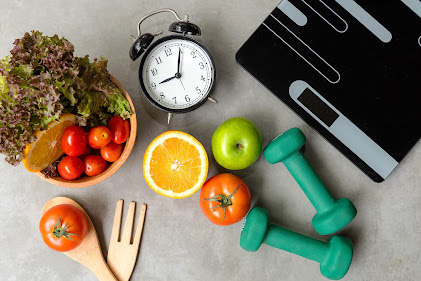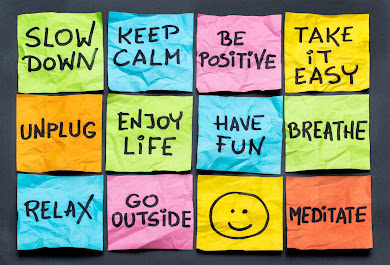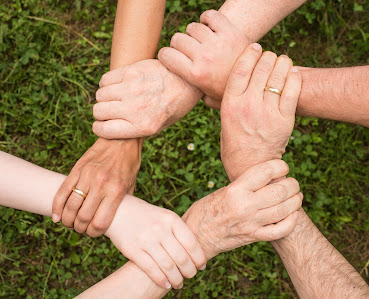Weight control🌵 and Lifestyle Medicines🌿 Part 2- Physical activity🏃🏽
Activity is a hugely underestimated part of weight control. Yet it is easily one of the most engaging and beautiful past times we could possibly enjoy. Physical activity🏃🏽 has been defined as: “Any movement of the body done through skeletal muscle contraction that causes the energy expenditure to be beyond its baseline”. Activity has a huge place in our search for weight control, as it is one of the major stabilizers⚖️ of weight. We will shortly look at some of the focal benefits of being more active. It’s very exciting! 🤓
The understanding of these principles will empower you to believe in yourself, and help you stop comparing yourself to other people or ridiculous expectations that the advertisements and media put upon us. We do not want to just accept the norm, sometimes extending yourself past the bare minimum will take us to places that we have never ever experienced before. Surely that is something that should inspire us to take that journey and learn the different levels of control we can have over our activity. By doing this we can truly find our sweet spot for our weight control as it relates to activity.
I want you to feel wonderful😇. Not only do you feel wonderful, but also practice gratitude🙏 every day for the small changes you make to your activity level. In our modern society far too many things that we could do for ourselves are done by machines 🚗. We get used to doing things in a certain way, very often this excludes the activity that our ancestors would have known once before. Like 200,000 years ago, most adults did between 4 to 4 1/2 hours of moderate to high intensity activity every day. It was part of their daily routine to make it possible to survive. Therefore, we must work on changing our behaviour to increase our activity level.
Weight gain in our senior years becomes a higher risk❗️, even with high activity levels, our access to eating high density and high calorie food makes it harder to put off weight gain. For this reason, just the minimum activity requirements may not be a sufficient level of activity for everyone.
Two errors can be made. Firstly, we can just see activity⛹🏽 as something we do to lose some weight; secondly, we can go and eat refined 🍰 or processed 🍔 food as a reward for the activity we did; thinking both examples/erros will give us benefit. Let me explain, for example -walking at a moderate pace for 20mins should burn about 100 calories of energy, so think how far you would have to walk to burn off a 500-calorie chocolate bar? But the calories-in and energy-expended are only part of the story. Let’s have a look at some benefits then discuss them:
• Resistance training 🏋️ can build stronger muscles and burn calories for you 24 hours a day, even when you are asleep.
• Aerobic activity🏃🏽🚴🏽🏊🏽 is better at burning calories than resistance training, in relation to weight loss.
• Weight loss is more successful in
combination with activity.
• Weight control is better achieved
through regular activity and scheduled exercise (a form of activity).
• Standing workstations 𓀛 are
a form of activity and can lead to significant calorie burning over time.
• Exercise can improve our mood, lower
stress level 🧘♂️and help control anxiety and depression, which
can curb our habitual cravings for food 🍦and stress related overeating.
• Higher activity and exercise levels can improve our sleep 💤quality, quantity and improve our hormone secretion of Leptin (suppresses our appetite) and reduce Ghrelin secretion (high makes us hungry). The opposite happens with less sleep, making us reach for anything up to 300 calories of saturated fat food. Imagine how much extra weight gain could take place over one year!
If exercise was a pill, everyone would be running to have it prescribed. With these benefits why wouldn’t you? But here is the beauty, you can choose your exercise and activity yourself and get the joy out of being active. When you exercise, some fascinating things happen to your body - Your energy levels rise, you feel more awake. Once you get to your desired weight, it is essential to include activity to remain at your new weight. We have already discussed nutrition in part 1 of this series, which is an essential component of losing weight. Hence, the power of nutrition and activity together is substantial and necessary for long term weight control🌵, which is what we are aiming at here.
Our 7th of May blog - Cardiovascular health with Lifestyle Medicine Part 1- Activity will refresh you on maintaining and improving your heart and blood vessel health with Activity, please see the link here https://talkinglifestylemedicine.blogspot.com/2023/05/cardiovascular-health-with-lifestyle.html for more details.
Now let’s look at suggestions to increase our activity levels for weight control:
• Start some regular 🕕 exercise🚶🏽. Exercise is defined as “purposeful physical activity that is organized and planned, also recurring and is done with the intent of improving or maintaining one or more components of health”. You could start with walking🚶🏽, running🏃🏽, cycling🚴🏽 or swimming🏊🏽. Playing a group sport may also interest you, such as golf 🏌️, bushwalking 🏕, sailing⛵️, skiing⛷, basketball 🏀 or football⚽️. Arranging exercise with a friend or group can help you maintain your interest and improve access to the benefit of social integration.
• Having a stand-up workstation 𓀛 in your office can be a great energy burner, allowing you weight bearing activity in the form of muscle contraction and balance control⚖️.
In summary, I know that activity is going to be an extremely important pillar in your quest for weight control🌵. I truly believe that you will notice differences that you did’nt know were possible, given time to look back and see the results. Next week we are going to cover the role of smoking cessation 🚭 in your weight control. Lastly, keeping a journal 🗒 of your activity is a very good way of looking back to see what you have done and achieved. There are many smart watches⌚️, Fitbits/programs 🖥 or apps 📱 that can help you track your activity level, diet, heart health, sleep and so on. Whichever method you choose, it will give you a record of your progress and influence in maintaining your weight. See you on my next blog and have a fantastic week!
References
- Centres for Disease control and Prevention. Department of Health and Human Services. NHIS- adult physical activity information-glossary. National Centre for Health statistics. February 17, 2017. www//cdc.gov/nchs/nhis/physical activity/pa glossary htm
- Kelly, J et al, Foundations of Lifestyle Medicine. The Lifestyle Medicine Board review manual. American College of Lifestyle Medicine. Copyright 2021. p.183-229.
- Williams PT, Wood PD. The effects of changing exercise levels on weight and age-related weight gain. Int J Obes (Lond). 2006 Mar;30(3):543-51. doi: 10.1038/sj.ijo.0803172. PMID: 16314878; PMCID: PMC2864590.
- King AC, Frey-Hewitt B, Dreon DM, Wood PD. Diet vs exercise in weight maintenance. The effects of minimal intervention strategies on long-term outcomes in men. Arch Intern Med. 1989 Dec;149(12):2741-6. doi: 10.1001/archinte.149.12.2741. PMID: 2596943.
- Blair SN. Evidence for success of exercise in weight loss and control. Ann Intern Med. 1993 Oct 1;119(7 Pt 2):702-6. doi: 10.7326/0003-4819-119-7_part_2-199310011-00015. PMID: 8363201.



Comments
Post a Comment